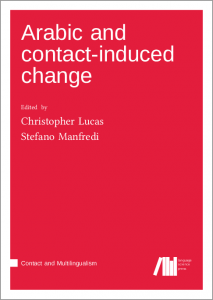Linguists have always known about the importance of contact between different ethnic and cultural groups. These encounters have shaped our societies, our cultures, and thereby also our language. With two new series on multilingualism, we provide new scientific outlets which can inform current debates in society at large and contribute scientific facts and models to the discussions. These two series complement each other nicely:
Current Issues in Bilingualism – edited by Andrea C. Schalley (Karlstad), M Carmen Parafita Couto (Leiden), Susana A. Eisenchlas (Griffith), Galina Putjata (Münster), and Jorge Valdés Kroff (Florida) – publishes both theoretical and empirical studies on individual and societal bilingualism, and hence bridges the gap that has traditionally been reflected in different approaches to the field. It covers both linguistic and cognitive as well as educational, affective, and social aspects of speakers’ bilinguality.
Contact and Multilingualism – edited by Isabelle Léglise & Stefano Manfredi (both CNRS SeDyL) – on the other hand looks at multilingual practices and language contact both at individual and societal levels together with historical, socio-anthropological and typological issues.
Both series have editorial boards of reputable scholars spanning several continents (CIB: 4, CAM: 6). And, of course, both series are Open Access, making sure that every person in the world interested in multilingualism (which should, really, be everybody!) has access to the latest research on this topic regardless of location, affili ation or personal financial situation.
ation or personal financial situation.
The first book to be published later this year is
Arabic and contact-induced change edited by Chris Lucas and Stefano Manfredi. This book will offer a synthesis of current expertise on contact-induced change in Arabic and its neighbours, with contributions written by many of the leading experts on this topic. Its purpose is to showcase the current state of knowledge regarding the diverse outcomes of contacts between Arabic and other languages, in a format that is both accessible and useful to Arabists, historical linguists, and students of language contact.

